-

Technology: Ear Training
Mike Lawson | August 14, 2014Six ear training programs for classroom and at-home use
"Garbage in, garbage out” is a guiding mantra for building computers and apps. It’s also true for our students’ brains. We are in the business of empowering young minds with healthy, useful information. Thanks to significant new developments, music educators can effectively combine music theory and aural training to empower students with ownership of their music creating experiences.
Ear training can cover a broad spectrum of useful music tools. These include pitch recognition, intonation, rhythmic drills, harmonic understanding of how music fits together vertically, better understanding of triads, complex chords, intervals, scale recognition, and how chord progressions are linked together.
Read More... -
Technology: Cloud-Based Software
Mike Lawson | November 19, 2013The Tech-Savvy Music Classroom
Teachers who use technology to introduce, reinforce, and evaluate students’ proficiency with musical concepts in their classrooms are often bound by the limitations of music-related software. I frequently hear questions like these: Which software is the right choice for my students? How can I equip my classroom with the limited budget that my school provides? How can I give students access to software even when they are not in my classroom?
There are several models that are useful for evaluating software to be used in your classroom [see sidebar], most of which emphasize ideas such as documentation, support, extensibility, navigation, and aesthetics. Once software designers deal with these issues, the more practical concerns of teachers come to the fore. Cost and access are perfectly legitimate concerns. In a typical computer lab scenario, once a school purchases computers and furniture, there is often little money left for software. In addition, students’ creativity may flourish if they have access to the technology for more than just a period a day, or perhaps less.
The emerging market of cloud-based software has already begun to conquer the issues of expense and access. But first, what is cloud-based software, and how can it help educators overcome these obstacles?
Read More...
Warning: Undefined variable $additional_loop in /home/sbomagazine/public_html/site/wp-content/themes/timeless2021/archive.php on line 103
Warning: Attempt to read property "max_num_pages" on null in /home/sbomagazine/public_html/site/wp-content/themes/timeless2021/archive.php on line 103


 "Garbage in, garbage out” is a guiding mantra for building computers and apps. It’s also true for our students’ brains. We are in the business of empowering young minds with healthy, useful information. Thanks to significant new developments, music educators can effectively combine music theory and aural training to empower students with ownership of their music creating experiences.
"Garbage in, garbage out” is a guiding mantra for building computers and apps. It’s also true for our students’ brains. We are in the business of empowering young minds with healthy, useful information. Thanks to significant new developments, music educators can effectively combine music theory and aural training to empower students with ownership of their music creating experiences.
 Teachers who use technology to introduce, reinforce, and evaluate students’ proficiency with musical concepts in their classrooms are often bound by the limitations of music-related software. I frequently hear questions like these: Which software is the right choice for my students? How can I equip my classroom with the limited budget that my school provides? How can I give students access to software even when they are not in my classroom?
Teachers who use technology to introduce, reinforce, and evaluate students’ proficiency with musical concepts in their classrooms are often bound by the limitations of music-related software. I frequently hear questions like these: Which software is the right choice for my students? How can I equip my classroom with the limited budget that my school provides? How can I give students access to software even when they are not in my classroom?





